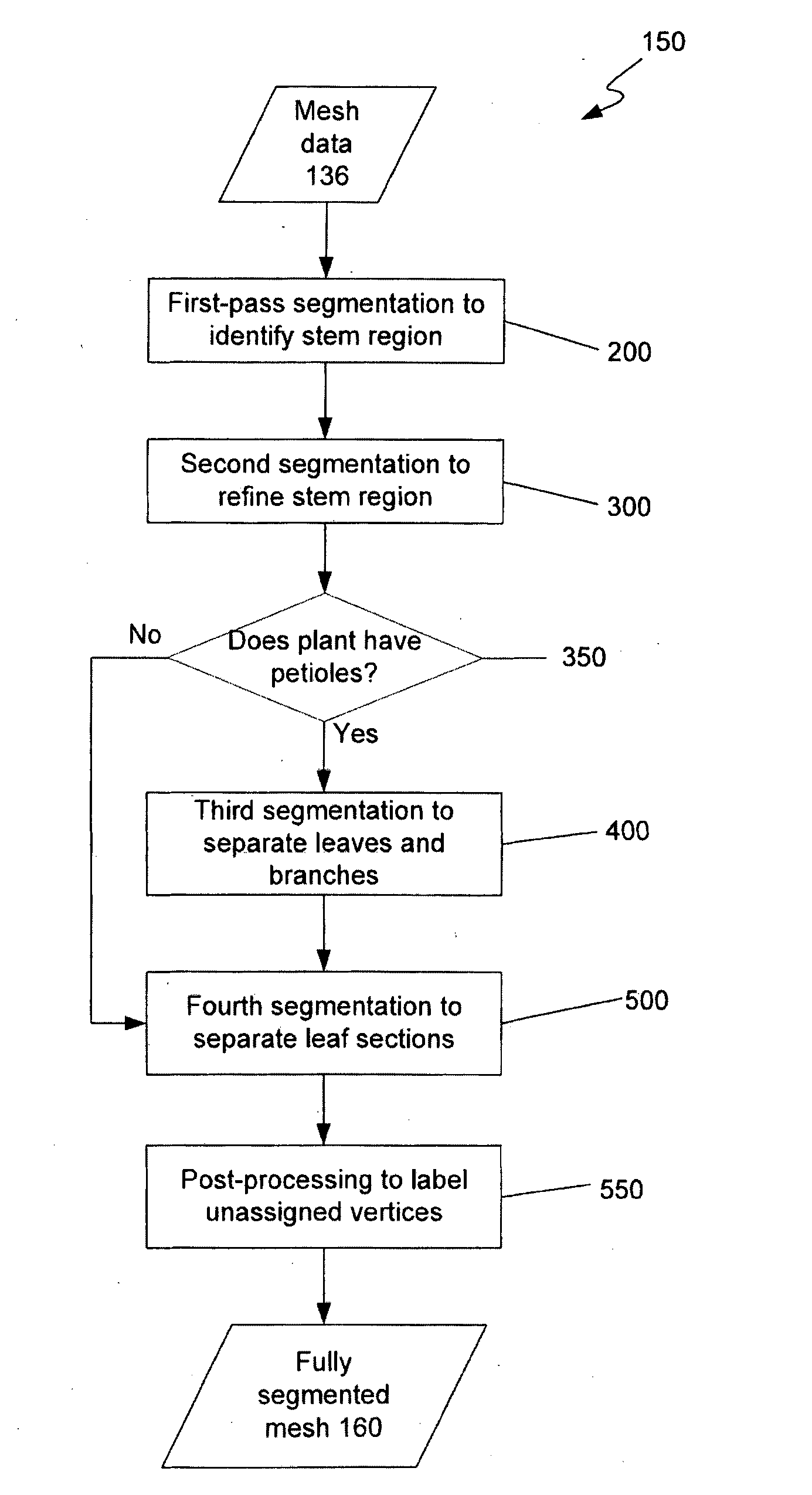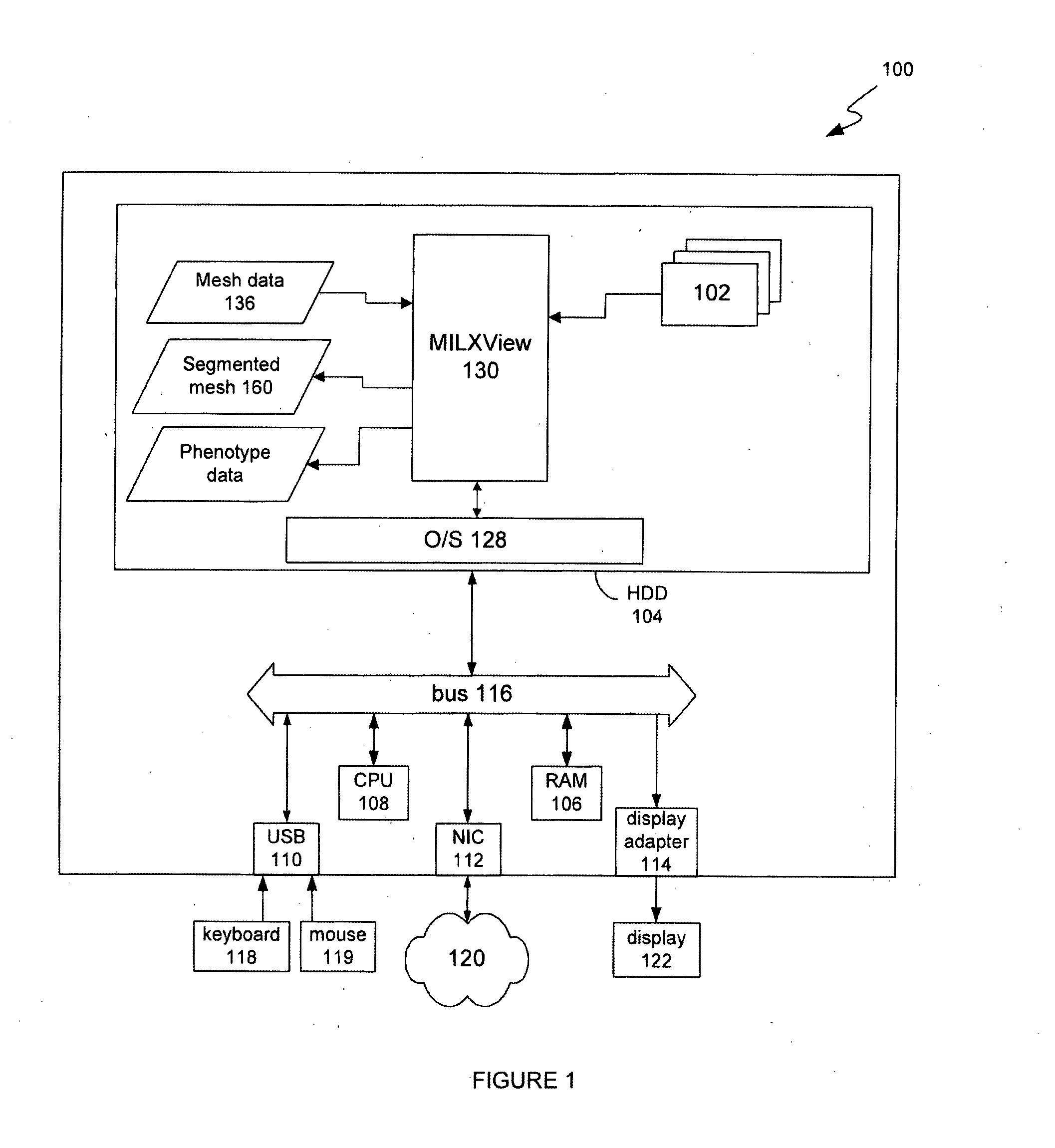Method and system for characterising plant phenotype
a plant phenotype and phenotype technology, applied in image analysis, instruments, computing, etc., can solve the problems of inability to provide a mechanism for studying the phenotype of the plant as a whole, inability to carry out manual analysis of this type for large numbers of plants, and many plants with complex and irregular morphology
- Summary
- Abstract
- Description
- Claims
- Application Information
AI Technical Summary
Benefits of technology
Problems solved by technology
Method used
Image
Examples
example
[0160]24 plant meshes were used to evaluate the segmentation methods described above. 6 different Gossypium hirsutum plants were studied. 4 plants were analysed at 4 time points. For each plant and each time-point, manual measurements of plant data such as stem length, leaf width and leaf length were performed manually. These manual measurements were used as ground truth in order to validate the accuracy of the segmentation and data extraction.
[0161]Images of the plants were captured using a high-resolution Pentax K10 camera with a sigma 20-40 mm aspherical lens. Each cotton plant pot was placed at the centre of a rotating tray over a calibration pattern. The calibration pattern, having known pattern size and spacings, was able to provide an indication of scale so that the final mesh coordinates were on the same scale as the manual measurements (in mm). The camera was fixed on a tripod during the entire acquisition process. The tray was manually rotated through 64 different angles a...
PUM
 Login to View More
Login to View More Abstract
Description
Claims
Application Information
 Login to View More
Login to View More - R&D
- Intellectual Property
- Life Sciences
- Materials
- Tech Scout
- Unparalleled Data Quality
- Higher Quality Content
- 60% Fewer Hallucinations
Browse by: Latest US Patents, China's latest patents, Technical Efficacy Thesaurus, Application Domain, Technology Topic, Popular Technical Reports.
© 2025 PatSnap. All rights reserved.Legal|Privacy policy|Modern Slavery Act Transparency Statement|Sitemap|About US| Contact US: help@patsnap.com



